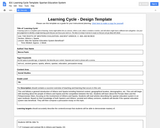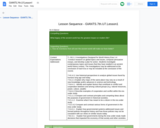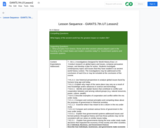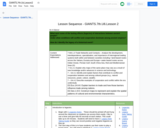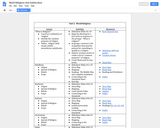7– G6.1.1 Investigations Designed for World History Eras 1-4
Conduct research on global topics and issues, compose persuasive essays, and develop a plan for action. Students investigate contemporary topics and issues that they have studied in an ancient world history context. The investigations may be addressed at the conclusion of each Era or may be included at the conclusion of the course.
7-H1.4.3. Use historical perspectives to analyze global issues faced by humans long ago and today.
7-G1.2.1 Explain why maps of the same place may vary as a result of new knowledge and/or advances in science and technology
7-G4.4.1 - Identify and explain factors that contribute to conflict and cooperation between and among cultural groups (e.g. natural resources, power, culture, wealth)
7-G4.4.2 Describe examples of cooperation and conflict within the era under study.
7-C1.1.1 Compare and contrast principles and competing ideas about the purposes of government in historical societies.
7-C1.1.2 - Examine what it has meant to be a citizen in the era under study.
7-C3..6.2 Compare and contrast various forms of government in the eras under study.
7-C4.3.1 - Explain how governmental systems addressed issues and formed policies throughout history and how those policies may not be consistent with our views on similar issues today.
7-E2.3.1 - Explain how governments during the eras under study made decisions that impacted the economy of that society and other societies.
E1.1 Individual, Business, and Government Choices
Describe how individuals, businesses, and governments make economic decisions when confronting scarcity in the market economy.
E1.1.1 Explain the role of incentives in different economic systems (acquiring money, profit, goods, wanting to avoid loss, position in society, job placement).
E1.1.2 Describe the circular flow model (that businesses get money from households in exchange for goods and services and return that money to households by paying for the factors of production that households have to sell) and apply it to a public service (e.g., education, health care, military protection).
E.2.3.1 Explain why national governments make decisions that impact countries (Tariffs, Embargoes, Trade agreements) explain China’s impact on world trade.
E3.1 Economic Interdependence
Describe patterns and networks of economic interdependence, including trade.
E3.1.1 Explain the importance of trade (imports and exports) on national economies in the Eastern Hemisphere (e.g., natural gas in North Africa, petroleum in Africa, mineral resources in Asia).
E3.1.2 Diagram or map the movement of a consumer product from where it is manufactured to where it is sold to demonstrate the flow of materials, labor, and capital (e.g., global supply chain for computers, athletic shoes, and clothing).
E3.1.3 Determine the impact of trade on a region of the Eastern Hemisphere by graphing and analyzing the Gross Domestic Product of the region for the past decade and comparing the data with trend data on the total value of imports and exports over the same period.
E3.1.4 Explain how communications innovations have affected economic interactions and where and how people work (e.g., internet home offices, international work teams, international companies).

